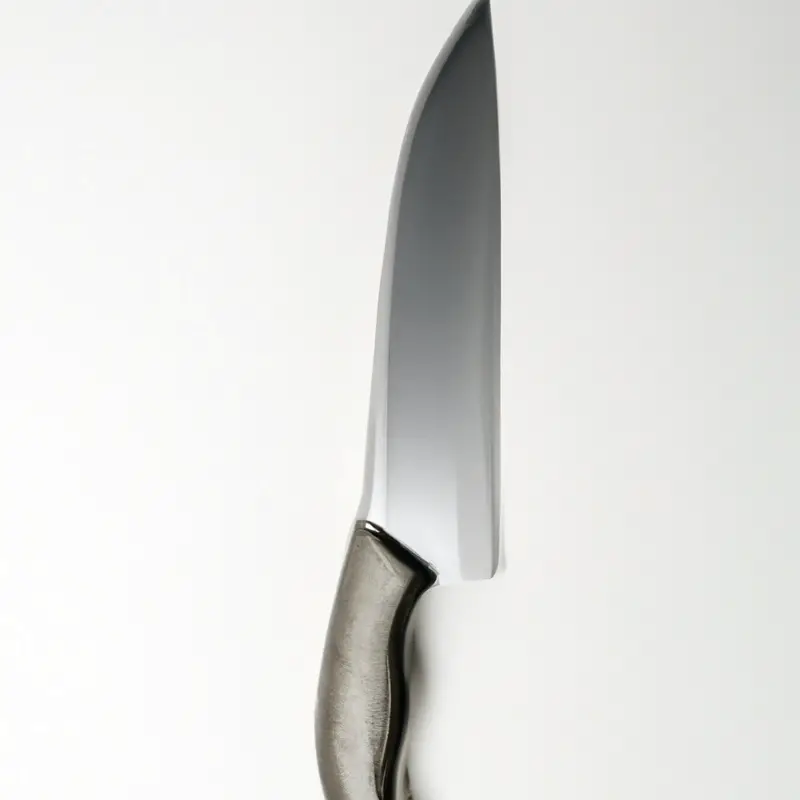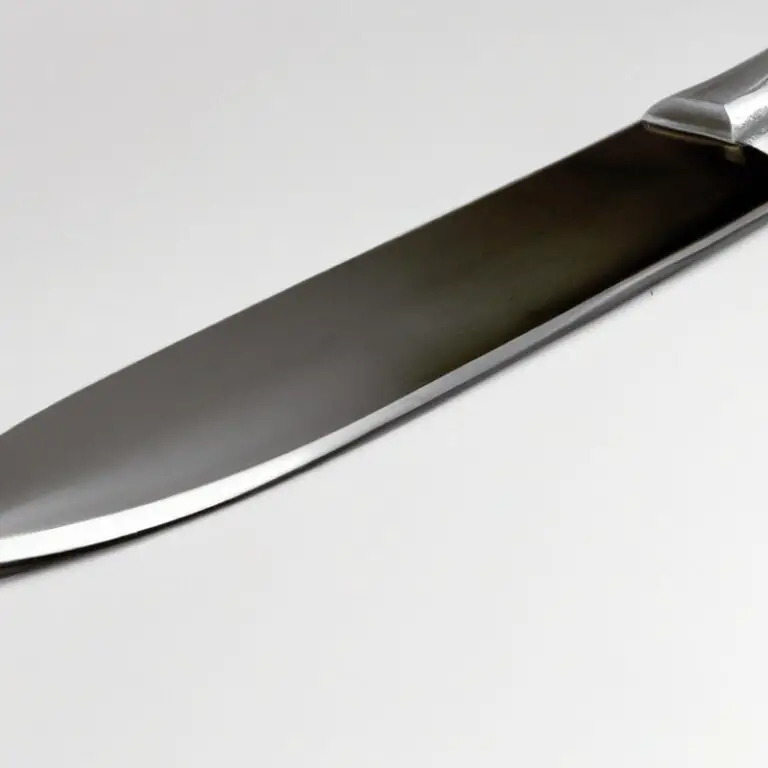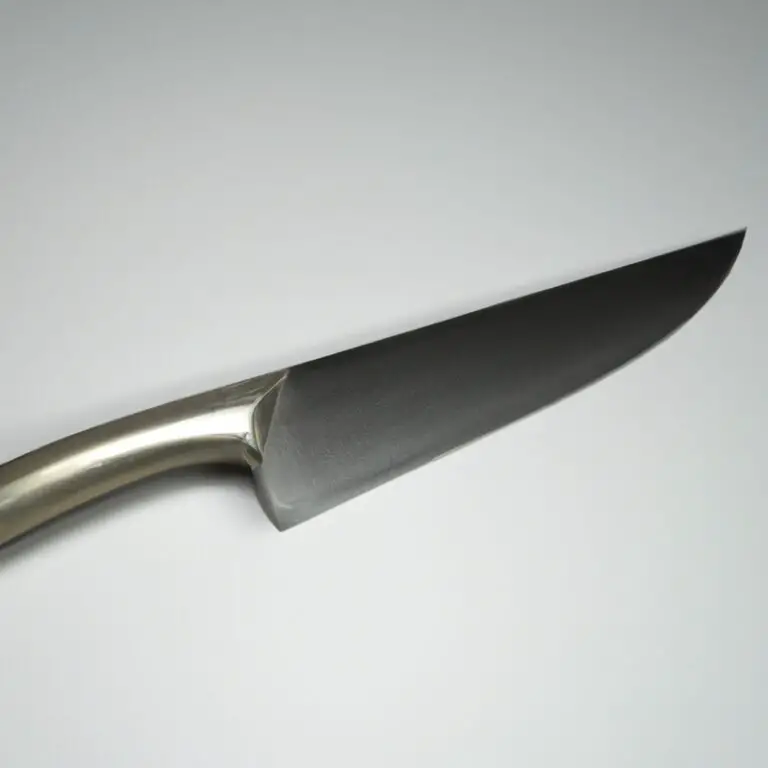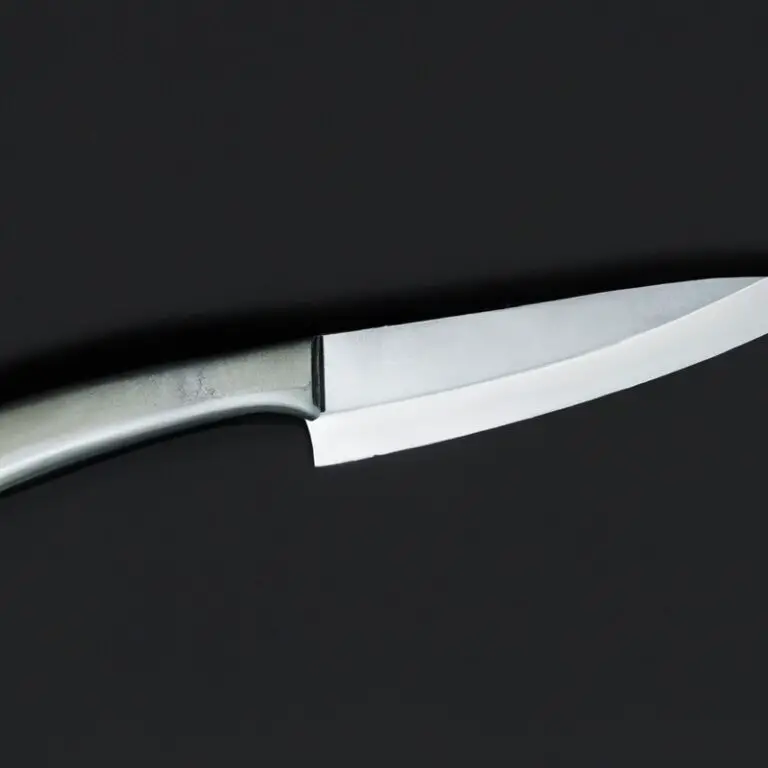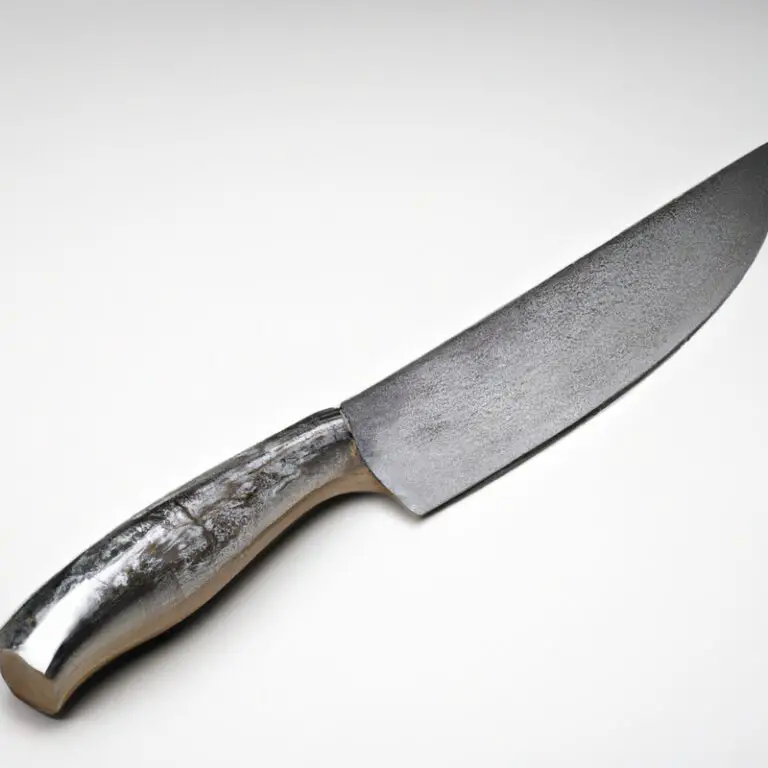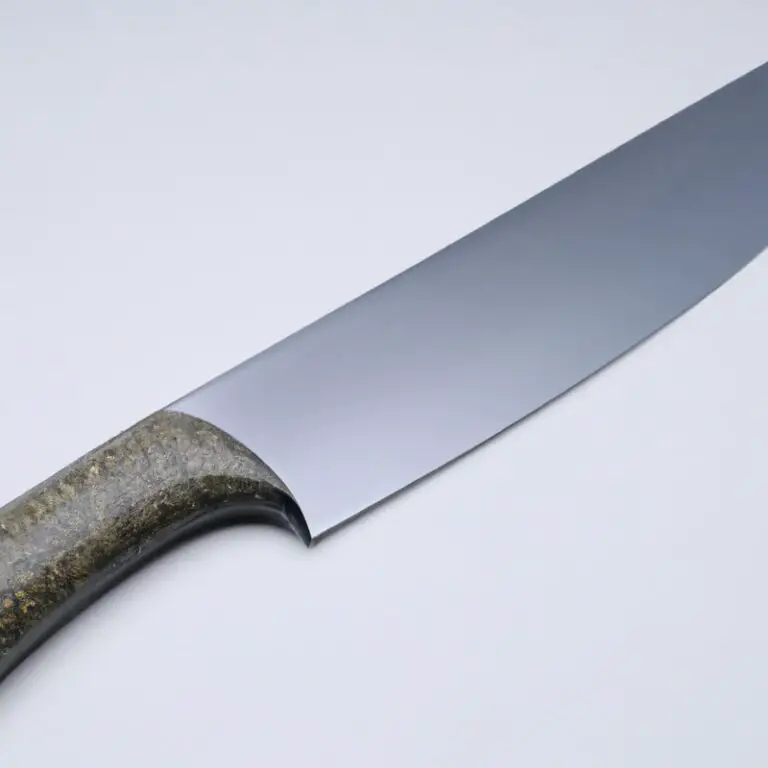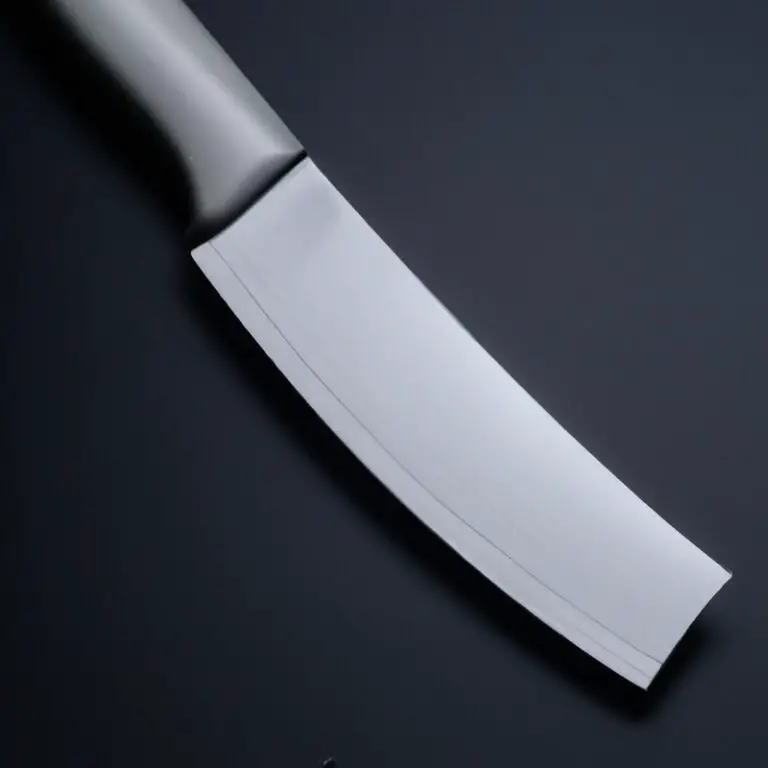How To Distinguish Between a Gyuto Knife And a Santoku Knife? Know It All!
Key Takeaways:
- The Gyuto knife is a versatile all-purpose knife used for slicing, dicing and chopping tasks, while a Santoku knife is specialized for slicing and chopping vegetables, meat, and fish.
- The key difference between a Gyuto and Santoku lies in the shape of their blades, with the Gyuto featuring a longer and narrower blade, while the Santoku has a shorter and wider blade.
- When choosing between a Gyuto and a Santoku knife, consider the specific tasks you will be performing, as well as your personal preferences and level of experience with different blade shapes.
- Ultimately, whether you choose a Gyuto or a Santoku knife, investing in a high-quality, sharp and durable blade is essential for achieving precise and efficient cuts in the kitchen.
Have you ever wondered what the difference is between a Gyuto knife and a Santoku knife? Both have become increasingly popular in kitchens worldwide, but their unique features and intended uses might surprise you.
As a chef, I know that having the right tools can make all the difference in the kitchen.
In this article, we’ll explore the key differences in blade shape and usage between Gyuto and Santoku knives. You’ll learn why Gyuto knives excel in slicing and chopping large cuts of meat and vegetables while Santoku knives are perfect for thinly slicing and dicing fish and poultry.
Join me on this journey to enhance your cutting technique and take your culinary skills to the next level.
| Gyuto Knife | Santoku Knife | |
|---|---|---|
| Shape of the blade | Curved at the tip and straight at the heel | Flatter throughout the blade |
| Blade length | Usually longer, around 8 to 12 inches | Usually shorter, around 5 to 7 inches |
| Blade width | Wider at the heel, gradually narrowing towards the tip | Wide at the heel and maintains its width towards the tip |
| Blade usage | Ideal for slicing meat, vegetables, and fruits with a rocking motion | Best for chopping vegetables and fruits with a push-pull motion |
| Weight | Heavier due to the longer and wider blade, more suitable for heavier cutting tasks | Lighter due to the shorter and flatter blade, suitable for lighter cutting tasks |
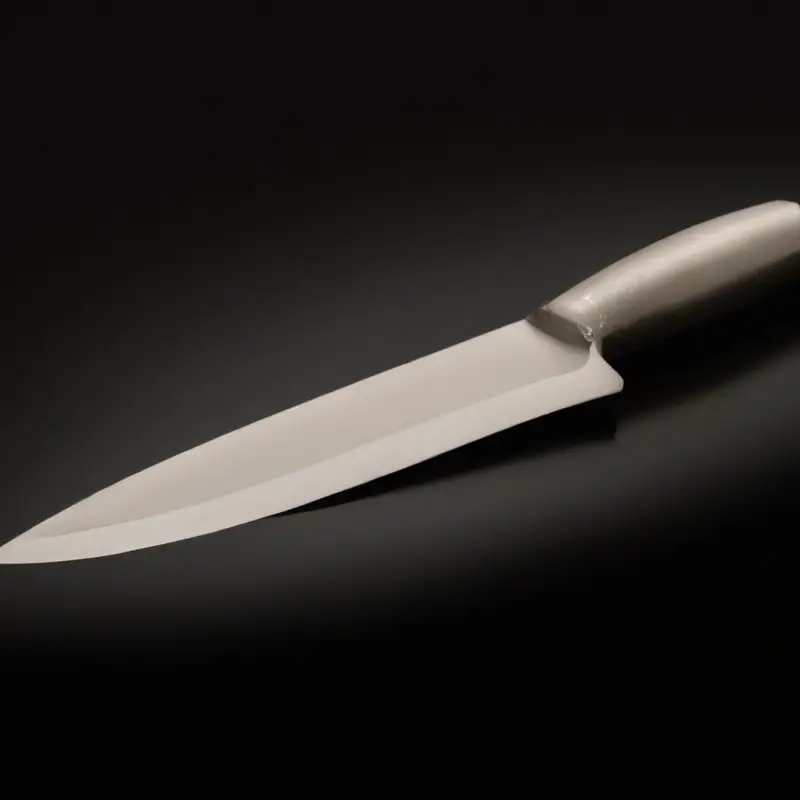
Gyuto vs Santoku: Understanding the key differences in blade shape and usage
Gyuto and Santoku knives are both Japanese style knives, but they have distinct differences in their blade shapes and intended uses. Gyuto knives have a longer and wider blade with a pointed tip, making them ideal for slicing and chopping large cuts of meat and vegetables.
On the other hand, Santoku knives have a shorter and thinner blade with a rounded tip, making them perfect for thinly slicing and dicing fish and poultry.
While both knives can be used for multiple tasks, understanding their unique features can help you select the right tool for the job.
Why Gyuto knives excel in slicing and chopping large cuts of meat and vegetables
Gyuto knives have a thinner and longer blade than Santoku knives, making them perfect for slicing and chopping large cuts of meat and vegetables. The long blade allows for a fluid motion, reducing the number of cuts needed to slice through a large piece of food.
Additionally, the thinner blade reduces drag and friction, allowing for a smoother and more effortless cutting motion.
This makes Gyuto knives an excellent choice for preparing large meals, such as roasts or stir-fries. Overall, if you’re looking for a knife that can handle a variety of cutting tasks, especially those involving larger food items, a Gyuto knife is a great option.
The unique features of Santoku knives that make them perfect for thinly slicing and dicing fish and poultry
Santoku knives have unique features that make them perfect for thinly slicing and dicing fish and poultry. Firstly, the blade of a Santoku knife is relatively shorter than that of a Gyuto knife, which makes it easier to control when performing intricate cuts.
Secondly, Santoku knives have a wider blade that allows for better leverage while cutting through delicate fish or poultry.
Lastly, the Granton edge found on some Santoku knives helps prevent food from sticking to the blade during slicing. Overall, the combination of a shorter length, wider blade, and Granton edge make Santoku knives ideal for precise cuts on fish and poultry.
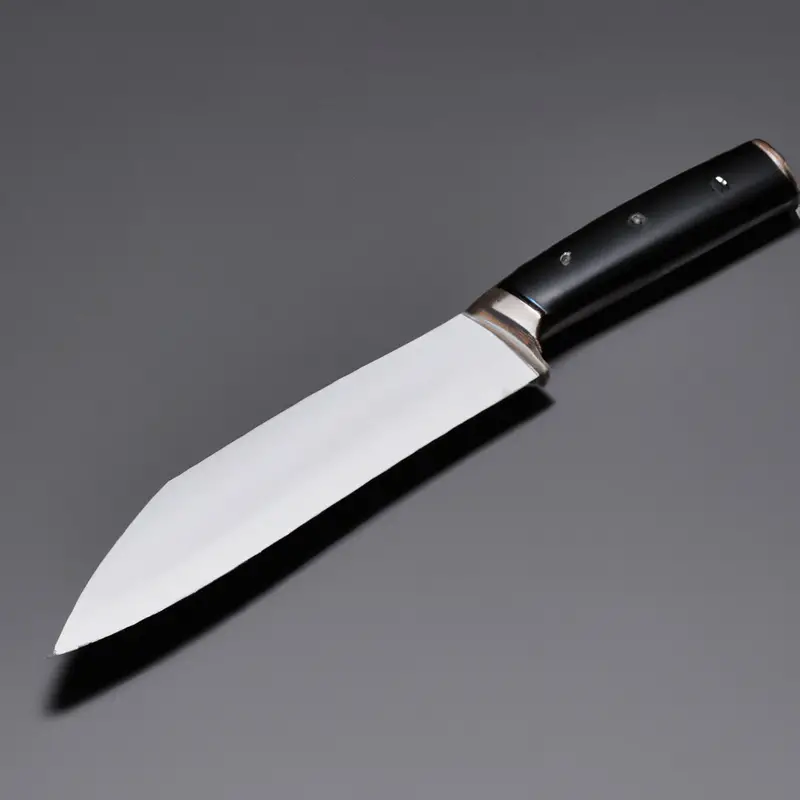
Materials matter: The impact of blade material on performance for Gyuto and Santoku knives
The type of material used to make the blade of Gyuto and Santoku knives has a significant impact on their performance. High-quality materials result in sharper, more durable and corrosion-resistant blades that require less frequent maintenance.
Carbon steel blades are known to hold a razor-sharp edge, but they are prone to rust and require more care compared to stainless steel blades.
Japanese steel, including VG-10 and AUS-10, are popular choices for high-end Gyuto and Santoku knives due to their excellent balance of durability, sharpness, and corrosion resistance. Titanium-coated blades offer additional durability and corrosion resistance and are a good choice for those prioritizing ease of maintenance.
Damascus steel blades, known for their beautiful patterns, are also an excellent choice for those interested in aesthetics as well as performance.
Ultimately, the choice of blade material depends on personal preference and intended use.
Handle with care: Choosing the best handle for your Gyuto or Santoku knife
When it comes to choosing the best handle for your Gyuto or Santoku knife, the most important factor is comfort. A comfortable handle will allow you to work efficiently without straining or developing blisters.
Handles are available in a variety of materials, including wood, plastic, and metal.
Wood is the most common and traditional handle material as it provides a comfortable grip and an elegant look to the knife. Plastic handles are lightweight, durable, and easy to maintain, making them ideal for commercial kitchens.
Metal handles offer a sleek, modern look and are easy to clean, but they can be slippery, so it is important to choose a design that provides a secure grip.
The shape of the handle is also crucial as it determines how the knife feels in your hand. Handles can be either round or oval, and some even have finger grooves and a contoured shape for additional grip.
When selecting a handle, it is important to hold it in your hand and check for any discomfort or difficulty in gripping.
Finally, consider the balance of the knife. A well-balanced knife reduces the risk of accidents, especially when you are working with harder or more challenging ingredients.
The balance of a knife depends on the ratio of the blade to the handle, and the shape of the knife.
Ultimately, investing in a high-quality knife with a comfortable handle will provide you with a more comfortable, efficient, and enjoyable cooking experience.
Sharpening techniques for Gyuto and Santoku knives: What you need to know
Sharpening your Gyuto and Santoku knives is an essential part of upkeep, as a dull blade can lead to injuries and difficulty in food preparation. Here are some sharpening techniques to keep in mind:
- Use the correct sharpening stone: Choose a stone with the right grit for your knife. For example, a grit of 1000-1200 is ideal for sharpening a dull blade, while 4000-6000 grit is best for honing.
- Angle your knife correctly: To sharpen, hold the blade at a 15 to 20-degree angle and swipe it along the stone in a sweeping motion. Ensure consistent pressure throughout.
- Stropping: Stropping is important when honing your blade. Take a piece of leather and apply a honing compound to it. Draw the blade along the leather, ensuring consistency and pressure.
- Test your blade: After sharpening, test your blade by slicing through a piece of paper. If you can cut cleanly through the paper, your knife is well sharpened.
Remember that sharpening is a skill that requires practice, so don’t be discouraged if your first attempts don’t produce the desired results. Keep practicing and adjusting your technique until you achieve sharpness.
Gyuto and Santoku knives compared: Which is best for home cooks and professional chefs?
When it comes to choosing between a Gyuto knife and a Santoku knife, it primarily depends on personal preference and intended use. Gyuto knives are ideal for slicing and chopping large cuts of meat and vegetables, while Santoku knives excel at thinly slicing and dicing fish and poultry.
Both knives have their unique features and are popular among home cooks and professional chefs.
Ultimately, it is important to consider the task at hand and choose the knife that will provide the best performance for that specific job.
Enhance your cutting technique: How to use a Gyuto and Santoku knife like a pro
Enhance Your Cutting Technique: How to Use a Gyuto and Santoku Knife Like a Pro Using a Gyuto or Santoku knife like a pro requires proper technique and practice. Here are some tips to help you improve your cutting skills:
- Grip the knife properly. Place your thumb and index finger on the blade’s opposite sides, with your other fingers wrapped around the handle. This will give you better control over the knife.
- Use a rocking motion. For both Gyuto and Santoku knives, use a gentle, back-and-forth rocking motion to smoothly chop fruits, vegetables or slice meat.
- Practice slicing. The best knives do not do the work themselves, instead, you should be running the blade back and forth across your product.
- Maintain the proper angle. Keep the blade of the knife at a consistent angle to achieve even slices or chops.
- Choose the right knife for the job. Use the Gyuto for large cuts of meat, vegetables, and hard cheeses. Use the Santoku for slicing and dicing fish, poultry, and softer vegetables like tomatoes.
- Keep the blade sharp. A dull blade will make it difficult to achieve clean cuts. Use a honing rod or have the blade sharpened by a professional.
By following these tips, you’ll be using your Gyuto or Santoku knife like a pro in no time. Practice makes perfect, so continue to hone your technique to become a skilled home cook or professional chef.
The anatomy of a Gyuto and Santoku knife: Understanding the different parts and how they affect performance
To understand the differences between Gyuto and Santoku knives, it’s important to have a grasp of their anatomy. The blade, spine, tip, heel, bolster, and handle are the main parts of a knife that can affect its performance.
Gyuto knives have a slimmer, longer, and more pointed blade than Santoku knives, which makes them ideal for slicing and chopping large cuts of meat and vegetables.
Santoku knives have a wider blade, with a straighter edge and less pointed tip, which makes them adept at thinly slicing and dicing fish and poultry. The bolster, a thick shoulder where the blade meets the handle, ensures proper balance and grip.
The handle can be made of different materials such as wood, plastic, or metal, and should provide a comfortable and secure grip.
The spine is the top edge of the blade that gives the knife its stiffness and resilience. Finally, the heel is the bottom portion of the blade nearest to the handle, used for cutting denser foods.
By understanding these different parts, you can select the right knife for your needs and use them effectively in the kitchen.
Beyond the basics: Advanced cutting techniques with a Gyuto and Santoku knife
Beyond the Basics: Advanced Cutting Techniques with a Gyuto and Santoku Knife To take your cutting skills to the next level, it’s essential to learn more advanced cutting techniques. Here are some techniques you can try with your Gyuto and Santoku knives:
- The Draw Cut: This technique involves pulling the knife towards yourself while cutting. It’s perfect for tough and dense vegetables like cauliflower and broccoli, or for slicing steak.
- The Rocking Motion: The rocking motion involves moving the blade back and forth while cutting. It’s ideal for mincing herbs and garlic, or for finely dicing onions.
- The Chiffonade: This technique involves rolling up the leaves of herbs or greens and slicing them into thin ribbons. It’s perfect for basil, spinach, or lettuce.
- The Push Cut: The push cut involves pushing the blade forward while cutting. It’s ideal for precision cuts like for sushi or sashimi.
- The Pull Through Cut: This technique involves pulling the blade through the ingredient while cutting in a controlled motion. It’s perfect for cutting thin slices of fish or meat.
Remember to always practice safety when trying advanced cutting techniques. Make sure your cutting board is stable, and your fingers are tucked out of the way.
By mastering these techniques, you’ll be able to create dishes like a pro with your Gyuto and Santoku knives.
Final Verdict
Understanding the key differences between a Gyuto knife and a Santoku knife is crucial for any professional or home cook seeking to elevate their culinary skills. From blade shape and material to handle design and cutting techniques, there are several factors to consider when choosing the right knife for your needs.
By implementing the insights shared in this article, you can make an informed decision and confidently select the best knife for your culinary creations.
Remember, investing in high-quality knives and mastering cutting techniques can significantly enhance the flavor, texture, and presentation of your dishes. So, whether you’re slicing meat, chopping vegetables, or dicing fish, a Gyuto or Santoku knife can be your best tool in the kitchen.
As you practice and hone your skills, you’ll be amazed at the difference a good knife can make in your cooking.
Trust the information presented here, and take action to unlock your culinary potential.

